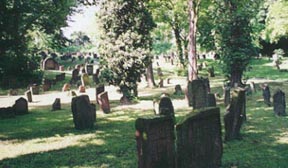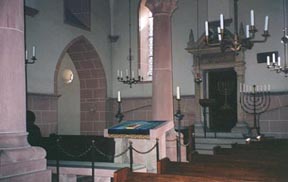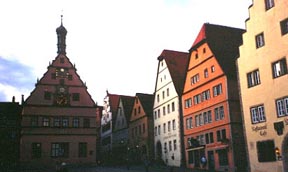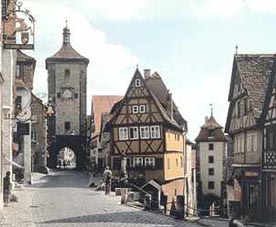

By
Don and Linda Freedman
Search
TheTravelzine
TheTravelzine Group
Access Your Mail
Don's
Gallery
Packing
Hints
Planning
Tips
Cities
Links
Links
LINKS TO OUR TRAVELOGUES
Argentina, Buenos Aires - Jan-Mar 2010
Argentina, Buenos Aires - Jan-Mar 2009
Argentina, Buenos Aires - Jan-Mar 2008
Austria - Fall 2005
Belgium, Brussels - Fall 2000
Canada - Summer 2002
Canada - Summer 2001
Canada - Summer 2000
Czech Republic - Spring 2000
France - Fall 2002
France, Paris - Fall 2000
France, Paris - Spring 1999
France, Lyon - Spring 1999
Germany, Berlin - Fall 2009
Germany - Fall 2002
Germany - Spring 2000
Germany - Fall 1999
Greece - Fall 2012
Greece - Fall 1999
Greece - Fall 1997
Hungary - Spring 2000
Israel - Fall 1999
Italy - Winter 2007
Italy - Winter 2006
Italy - Winter 2005
Italy - Winter 2004
Italy - Winter 2003
Italy - Winter 2001
Italy - Fall 1998
Italy - Fall 1996
Netherlands - Spring 2000
Portugal, Azores - 2019
Portugal, Azores - 2018
Portugal, Sao Miguel & Lisbon - 2017
Portugal, Azores - 2017
Portugal, Azores - 2016
Portugal, Azores - 2015
Portugal, Azores - 2014
Portugal, Azores - 2013
Portugal, Azores - 2012
Portugal, Azores - 2011
Portugal, Lisbon - 2011
Portugal - Fall 2006
Portugal - Fall 2004
Portugal - Fall 2003
Portugal - Fall 2001
Portugal - Spring 1999
Portugal - Spring 1997
Slovakia - Spring 2000
Slovenia - Spring 1999
Slovenia - Fall 1996
Spain, Barcelona - Winter 2006
Switzerland - Fall 2002
Switzerland - Spring 2000
Switzerland - Spring 1999
Switzerland - Fall 1998
Switzerland - Fall 1997
Switzerland - Spring 1996
U.S. Florida, Key West - Fall 2006
U.S. Florida - Spring 2001
U.S. Maine - Summer 2002
U.S. Massachusetts - Summer 2003
U.S. Massachusetts - Summer 2002
U.S. Massachusetts - Summer 2001
U.S. New York State - Fall 2005
U.S. New York State - Summer 2004
U.S. New York State - Summer 2003
U.S. New York State - Summer 2001
U.S. Washington,DC - Spring 2000
EUROPEAN JEWISH HERITAGE TOUR Spring 2000 (5)
BONN
RÜDESHEIM | WORMS | ROTHENBURG-OB-DER-TAUBER
Bonn sits perfectly on the Rhine. Visually, it is a city of contrasts. Beautiful park areas spread from the University of Bonn to the Rhine with chestnut trees blooming everywhere including along the pedestrian shopping streets. In the center of town is the inviting Marktplatz with streets surrounding it in an interesting pattern. Unfortunately, Bonn was substantially destroyed during World War II and the post-war reconstruction leaves a lot to be desired. The only building to survive the war was the old Town Hall in the Marktplatz.
Many jobs have been lost with the move of the government to Berlin but there is an inspiring confidence in plans to make Bonn a center for international cooperation, science, research and forward-looking industry.
Ludwig Van Beethoven was born in Bonn. A walking tour of the city starting at the Beethoven Memorial in the Münsterplatz follows in the footsteps of the great composer and not only gives interesting details of his life but of the history and culture of the city.
It was a clear, sunny day to enjoy traveling along the Rhine, first by bus to St. Goarshausen and then on a cruise boat to Rüdesheim. In Remagen we stopped to view the remains of the Ludendorff Bridge, the only Rhine bridge not destroyed by the Nazis in 1945, resulting in a substantial shortening of the war.
We caught a real break lunchtime. Our knowledgeable driver, Henry, pulled into the Königsbacher Brewery and we headed directly to the beer garden. Sausages, hot off the grill, fabulous fries and fresh beer - even the sudden arrival of dark clouds and a downpour could not spoil the moment.
Fortunately the rain passed quickly and clear skies were with us as we crept along the Rhine. This was not a particularly breathtaking event. There are vineyards and some small villages along the way but not the enchanting kind.
The proprietor of our hotel for the evening in Rüdesheim greeted us at the dock with a huge wine glass in hand for our sampling of the product of the nearby vineyards. We do have a problem with communal drinking so we passed on the opportunity.
Rüdesheim nestles on the banks of the river surrounded by vineyard-covered rolling hills. The narrow streets, monuments and sights can be covered on foot in an hour.
The Hotel
Rüdesheimer Schloss claims to be a four star
establishment. The fact that the modern furnishings are
tacky, there is no air conditioning and our room was
ceiling to wall insects because the windows had to be
open, there is no English T.V. channel and the toilet
paper holder contained a roll of twelve sheets is
sufficient reason to downgrade it to two stars. But when
you add on the fact that when we got back after dinner we
had to listen to the loud music from the Garden
Restaurant below (until after midnight), the rating drops
to no stars. OK, keeping my emotional reaction out of it,
this is no more than a three star hotel and that's
stretching it. Perhaps the kitchen, where some tour
members opted to have dinner which they enjoyed very much
and which prepared our excellent breakfast, is part of
the reason for the generosity of the rating. ![]()
There is one truly wonderful reason to come to Rüdesheim and that is the Restaurant Zur Entenstube in the Hotel Trapp at Kirchstrasse 7. Fate smiled on us. While we were searching for a restaurant we had found on the Internet, we stopped a young man for directions. He didn't know where our chosen place was but he enthusiastically recommended the Duck House. We opened the door to stucco, wood beams, large comfortable wooden booths and the aroma of ecstasy. We were warmly greeted by a smiling, gracious woman and shown to the last available booth.
Every conceivable duck artifact and decoration graced the restaurant. The motif was carried-out with woodcarvings, glass figurines, curtains, upholstery, photos and napkin holders. Until now, the best duck breast we ever had was in southwestern France in an inn where the owner raised the ducks and roasted the breasts in an open hearth. The plump, tender, juicy beauty presented to me here was perfectly roasted slightly less than medium rare and finished with a light, fruity pepper sauce. It is now a tie for best. There will have to be a run-off for the tiebreaker someday. The potato pancakes served with the duck were equally delicious. All this and a Bitburger Pils - heaven!
While duck breast works for me, Wiener Schnitzel is Linda's area of expertise. Tonight's schnitzel was very special indeed. A generous cut of superb quality milk-fed veal was gently covered with a spectacularly flavorful breading and pan-fried to slightly crisp doneness on the outside and fork-cutting tenderness on the inside. Delicious homemade hand-cut fries accompanied this awesome delight. Both meals started with a crisp garden salad to whet the appetite.
About halfway through the meal we were entertained by a neighborhood marching band celebrating a local event.
A couple and their rather large dog arrived and the owner appeared with a plate of food and a bowl of water for the gentle fellow, both of which disappeared within seconds. Next course was chocolate bars. Now content, he fell asleep beside the table while his folks enjoyed their dinner.
After enjoying the diversion, we savored a shared portion of homemade walnut ice cream, beautifully presented surrounded by kiwi on a bed of light egg and rum sauce and topped with fresh whipped cream.
We had a glimpse of the kitchen and it sparkled. The owners and staff treat you like family and you feel right at home. These are real people, treating both locals and visitors with the same genuine warmth. Reluctantly we said good night and headed back to kill bugs to the blaring sounds of music from the restaurant below.
 Mainz, Speyer and
Worms, three lovely towns on the Rhine, were the most
important centers of Jewish learning in Germany, known by
their Hebrew acronym SHUM. Only Mainz, of the three, has
a Jewish community today. Worms is home to some of the
most memorable Jewish sites in Germany. As there is no
Jewish community in Worms, with the exception of a few
Russian immigrants, the Jewish sites are maintained by
the municipality.
Mainz, Speyer and
Worms, three lovely towns on the Rhine, were the most
important centers of Jewish learning in Germany, known by
their Hebrew acronym SHUM. Only Mainz, of the three, has
a Jewish community today. Worms is home to some of the
most memorable Jewish sites in Germany. As there is no
Jewish community in Worms, with the exception of a few
Russian immigrants, the Jewish sites are maintained by
the municipality.
Judengasse is still configured, as it was during the Middle Ages, parallel to the remnants of the city's north wall. Today it is a picturesque cobbled street lined with pastel-colored homes. Just off Judengasse is Synagogenplatz, which houses the Jewish treasures.
The greatest Talmudist of the 11th century, Rashi, studied in Worms and he is linked eternally to the city's eminence. The Rashi Synagogue was destroyed in 1938 and rebuilt after the war. The vaulted stone interior is Spartan. A large room to the left of the bema (prayer platform) was a separate women's synagogue. It is now empty except for a Holocaust memorial to the 500 Jews of Worms murdered by the Nazis.
 The Rashi Chapel
was built in 1642 complete with a chair possibly used by
Rashi himself. In the garden, a narrow staircase descends
to the mikva (ritual bath) dating from 1189. Adjacent to
the synagogue is the Rashi House, now home to the city
archive and its Judaic collection. Opened in 1982, it
stands on the site of ancient structures that have served
as a yeshiva, a Jewish community hall, a hospital, and an
old age home and, in 1941-42, the assembly point for Nazi
deportations.
The Rashi Chapel
was built in 1642 complete with a chair possibly used by
Rashi himself. In the garden, a narrow staircase descends
to the mikva (ritual bath) dating from 1189. Adjacent to
the synagogue is the Rashi House, now home to the city
archive and its Judaic collection. Opened in 1982, it
stands on the site of ancient structures that have served
as a yeshiva, a Jewish community hall, a hospital, and an
old age home and, in 1941-42, the assembly point for Nazi
deportations.
Southwest of the Worms city hall is Holy Sands, Europe's oldest preserved Jewish cemetery. Two thousand densely packed, well-worn hard sandstone tombstones are surrounded by beautifully kept vegetation. Many eminent scholars are buried here; most in a section designated the Valley of the Rabbis. The courage of the town's archivist, Dr. F.M. Illert, saved the cemetery and many artifacts from the Nazis.
After a brief stop in Heidelberg to tour the castle on high, we continued south along the Rhine, this section of which is quite gorgeous with hills and thick forests on both sides.
 At Heilbronn we picked up the
highway to our overnight destination, Rothenburg-Ob-Der-Tauber.
This splendid walled city, with its Gothic, renaissance
and half-timbered houses and cobbled lanes, is one of the
most beautifully preserved 16th century cities in Europe.
At Heilbronn we picked up the
highway to our overnight destination, Rothenburg-Ob-Der-Tauber.
This splendid walled city, with its Gothic, renaissance
and half-timbered houses and cobbled lanes, is one of the
most beautifully preserved 16th century cities in Europe.
The Hotel Eisenhut at 3-7 Herrngasse is right in the heart of the city. Comprised of four patrician houses from the 15th and 16th centuries, you can be sure no two rooms are alike and there are nooks and crannies to be discovered everywhere. The reception hall and public rooms are museum-like with carved wood, beamed ceilings, gorgeous fabrics and furnishings and exquisite area rugs. Our large room and bathroom (complete with bidet and double sinks) had a lovely view of the terrace, garden and surrounding countryside. The decorating was bright and cheerful with lovely wicker and wood furniture with upholstery, curtains, bedding and area rugs in turquoise and rust.
Dinner was included for the group and we dined on the outdoor terrace. We started with a decent potato and asparagus soup. Both of us chose the poached salmon for the main course. The sliver of salmon was tasteless and the mushroom cream sauce seasoned with pepper did little to help. As the rains came, we dashed into the dining room for a dessert of vanilla ice cream on canned fruit. The two servers assigned to us did their best but could have used some assistance. The breakfast in the morning was good and served in a pretty room.
 Jews lived in
Rothenburg from the 12th to the 16th century and again
between 1875 and World War II. Even though its Jews were
repeatedly besieged and expelled, Rothenburg became a
center of Jewish scholarship. Meir Ben Baruch, who
settled in the town in 1246, was Central Europe's leading
Jewish scholar; his fame attracted students from all over
Europe.
Jews lived in
Rothenburg from the 12th to the 16th century and again
between 1875 and World War II. Even though its Jews were
repeatedly besieged and expelled, Rothenburg became a
center of Jewish scholarship. Meir Ben Baruch, who
settled in the town in 1246, was Central Europe's leading
Jewish scholar; his fame attracted students from all over
Europe.
Rothenburg's Kapellenplatz was the site of the first Jewish quarter, which existed until 1390. The green post-war building on the square was the site of the first community center. The white tower is attached to the Judentanzhaus (Jewish dance house), a salmon-colored, half-timbered building, which was the Jewish community center from 1330 until 1520. (It was destroyed during World War II and reconstructed in 1953.) Thirteenth century Jewish tombstones are embedded in the ancient stone wall around the dance house garden (Rabbi Meir Ben Baruch Garden). This is the start of Judengasse with buildings dating from the 13th and 14th centuries, making this one of Germany's best-preserved medieval Jewish quarters.
or JUMP to any city on the tour:
AMSTERDAM | COLOGNE | BONN | RÜDESHEIM | WORMS
ROTHENBURG-OB-DER-TAUBER | PRAGUE | BRATISLAVA | BUDAPEST
Search TheTravelzine | TheTravelzine Group | Don's Gallery
Packing Hints | Planning
Tips | Cities
Links
All pages on TheTravelzine.com©Copyright 1996-2020 Don & Linda Freedman